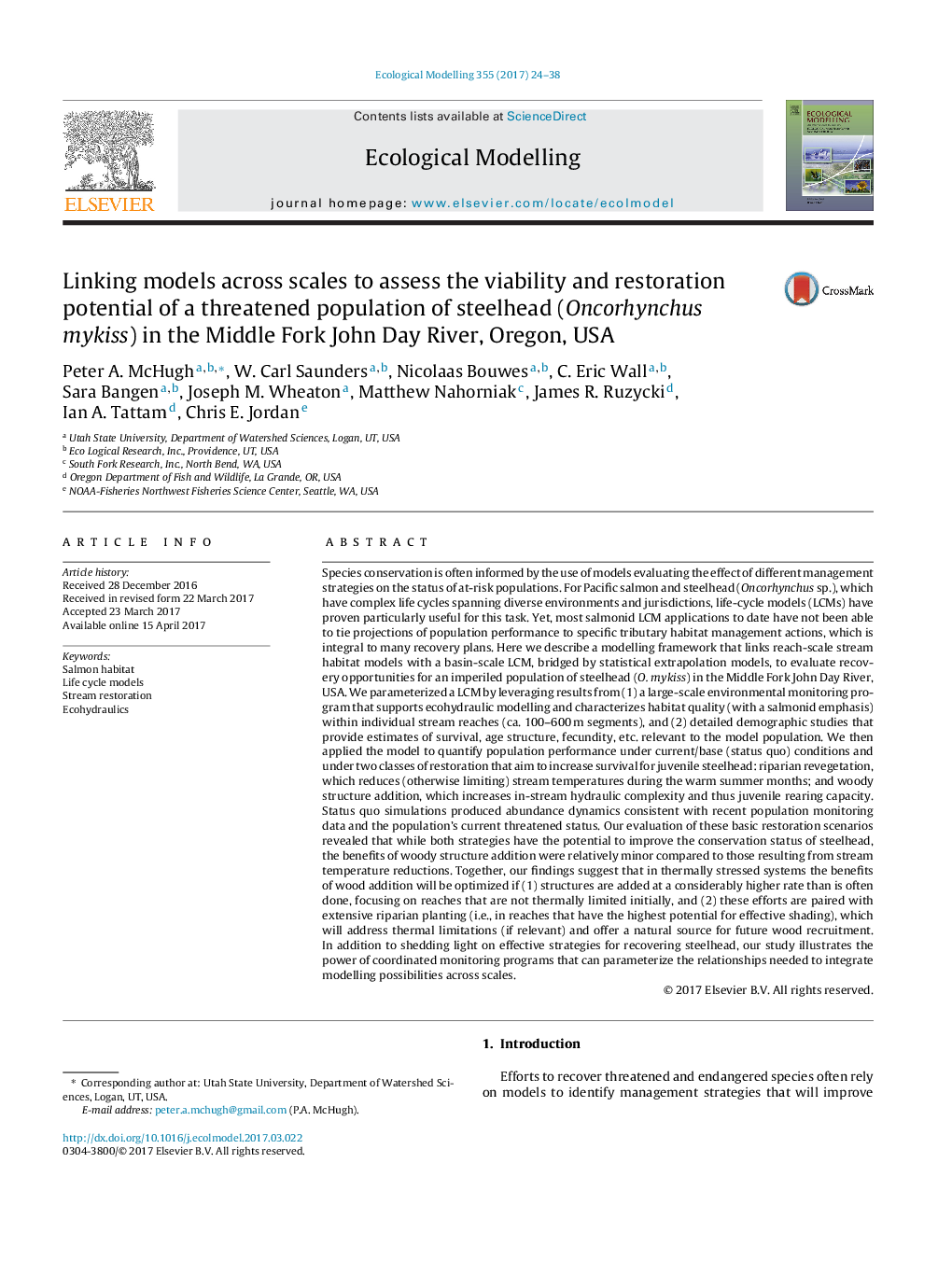| کد مقاله | کد نشریه | سال انتشار | مقاله انگلیسی | نسخه تمام متن |
|---|---|---|---|---|
| 5742105 | 1617392 | 2017 | 15 صفحه PDF | دانلود رایگان |

- Reach-scale ecohydraulic models were combined with a population model to evaluate the benefits of habitat scenarios for a threatened fish population.
- Scenarios involved reducing water temperatures via riparian restoration and increasing complexity of habitat via wood addition.
- The population-level benefits of cooler water temperatures exceeded those due to wood addition.
- This work highlights the value of integrating across habitat and population modelling disciplines.
Species conservation is often informed by the use of models evaluating the effect of different management strategies on the status of at-risk populations. For Pacific salmon and steelhead (Oncorhynchus sp.), which have complex life cycles spanning diverse environments and jurisdictions, life-cycle models (LCMs) have proven particularly useful for this task. Yet, most salmonid LCM applications to date have not been able to tie projections of population performance to specific tributary habitat management actions, which is integral to many recovery plans. Here we describe a modelling framework that links reach-scale stream habitat models with a basin-scale LCM, bridged by statistical extrapolation models, to evaluate recovery opportunities for an imperiled population of steelhead (O. mykiss) in the Middle Fork John Day River, USA. We parameterized a LCM by leveraging results from (1) a large-scale environmental monitoring program that supports ecohydraulic modelling and characterizes habitat quality (with a salmonid emphasis) within individual stream reaches (ca. 100-600Â m segments), and (2) detailed demographic studies that provide estimates of survival, age structure, fecundity, etc. relevant to the model population. We then applied the model to quantify population performance under current/base (status quo) conditions and under two classes of restoration that aim to increase survival for juvenile steelhead: riparian revegetation, which reduces (otherwise limiting) stream temperatures during the warm summer months; and woody structure addition, which increases in-stream hydraulic complexity and thus juvenile rearing capacity. Status quo simulations produced abundance dynamics consistent with recent population monitoring data and the population's current threatened status. Our evaluation of these basic restoration scenarios revealed that while both strategies have the potential to improve the conservation status of steelhead, the benefits of woody structure addition were relatively minor compared to those resulting from stream temperature reductions. Together, our findings suggest that in thermally stressed systems the benefits of wood addition will be optimized if (1) structures are added at a considerably higher rate than is often done, focusing on reaches that are not thermally limited initially, and (2) these efforts are paired with extensive riparian planting (i.e., in reaches that have the highest potential for effective shading), which will address thermal limitations (if relevant) and offer a natural source for future wood recruitment. In addition to shedding light on effective strategies for recovering steelhead, our study illustrates the power of coordinated monitoring programs that can parameterize the relationships needed to integrate modelling possibilities across scales.
Journal: Ecological Modelling - Volume 355, 10 July 2017, Pages 24-38